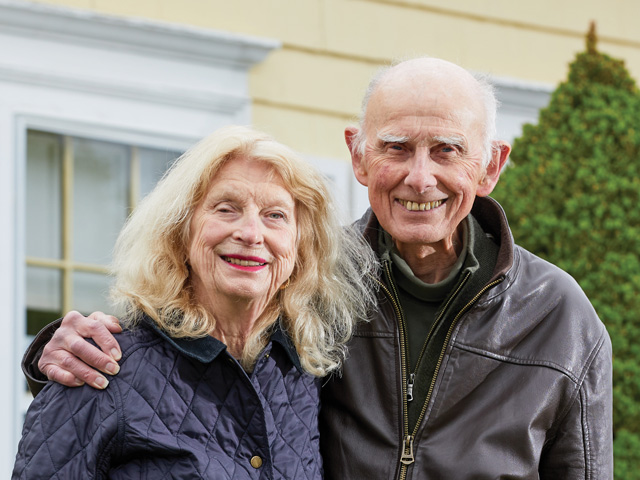The light-filled aquatic center at the Margot Connell Recreation Center.
Photo: Anton Grassi Photography
Bright Ideas
Kate St. Laurent has a long history with Boston College. The Newton native graduated in 2002 and her father, John Springfield, used to work in information technology at BC. Now an associate vice president with the architecture firm CannonDesign, St. Laurent recently found herself back on campus to design the lighting for the Margot Connell Recreation Center. Where the old Rec Plex was “dark and dreary,” she said, the new building “glows from within.”

Photo: Laura Peters
Though St. Laurent considered studying education and math at BC, she wound up majoring in fine arts with a concentration in drawing. “I had no idea lighting design really existed as a profession until my teacher in graduate school exposed me to it,” she said. “It really is the perfect meld of science, math, and art. It uses all of the different sides of my brain on a regular basis.”
If you’ve never noticed lighting design before, it probably means you’ve been in relatively well-lit environments, St. Laurent said. But if you can think of a place in which you were especially aware of the lighting or felt uncomfortable, you’ve experienced poor design.
Here, she shares expert tips for lighting a space.
USE LED WISELY
This powerful, efficient technology provides a lot of brightness, but LED’s maximum output doesn’t work in every situation. Always consider a fixture’s directionality and sightlines when determining whether LED will create a pleasant environment and aesthetic.
LOOK NORTH
As sun-path diagrams demonstrate, in the Northern Hemisphere, north-facing windows are ideal for capturing significant sunlight sans irritating glare because they don’t get direct rays.
FLATTER YOUR SPACE
Lighting can change perceptions of a room. If you want a space to feel taller, provide light that indirectly illuminates the ceiling. You can also light the walls to provide a sense of elongating or widening the room. ◽


 print
print mail
mail


